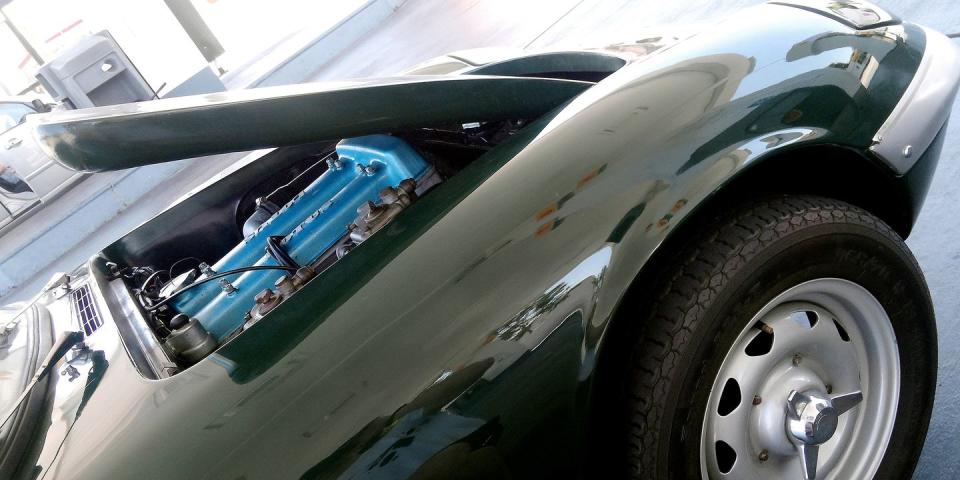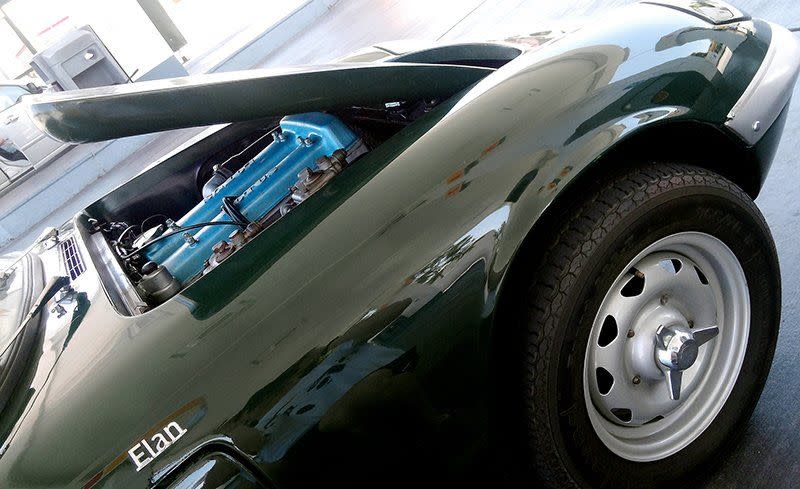Saving Lotus Will Take Years, But at Least Someone Has Taken the First Step


My friend John Lacey’s lovely little 1967 Lotus Elan was burning gas beautifully right up until it wasn’t. At the notoriously clogged interchange of L.A.’s 405 and 101 freeways, which actually has its own Yelp rating (amazingly, 2.5 stars), the purring little blue-bonneted four-cylinder went “brrrrrdup!” and the tach needle fell limp. We managed to coast up the very off-ramp we were heading for on our way to the annual Queen’s English car show in Van Nuys and then downhill into a fuel plaza offering blessed shade. I was optimistic. In my experience, which includes two cantankerous Lamborghini Espadas, the more sudden and calamitous the failure, the easier it is to fix. And it wasn’t as if we’d thrown a rod; the engine just went “dup!” The tank had vacuum-locked, a wire had fallen off—something would be obvious and easily fixed with a car key, which, after a brief search of the Elan’s teensy trunk, proved to be the only tool on hand.
Well, it wasn’t obvious. The coil or the condenser had failed, or possibly the foot of the points that follows the distributor cam had worn down. Either way, with the distributor buried under the intake manifold as a byproduct of the Ford-Lotus shotgun marriage that is the Elan’s engine, we capitulated and called for a tow. “Lotus—Lots of Trouble, Usually Serious,” noted our friend Mitch Clements, who had purred over in his Jag XK-E to lend a hand. I felt a bit guilty, since I had talked John into taking the Elan, which had been napping for far too long in the hangar under the airplane wing.
I started my long, as-yet-unfinished education about cars in the fifth grade in an almost identical Elan belonging to my oldest friend’s English stepdad, who used to take us to club races at Michigan’s Waterford Hills track in it. We kids would take turns wedging into the space behind the seats: Cops didn’t ticket you then for treating children as soft luggage.
So I have a fondness for that car—and Lotus in general, which itself had gone down for a bit of a nap until China’s Geely purchased a controlling interest in the company this May from Lotus’s owner, Proton. A couple of years ago I went to the factory at the old RAF Hethel air base with my friend Ken Evans, a native Norfolk lad who worked at Lotus for over 40 years and has some Colin Chapman tales best shared over pints at Kings Head in nearby Hethersett. The buildings at the former B-24 bomber field were looking a little weedy, and the naked girders of a half-built (and half-cocked) plant expansion were quietly rusting in the moldering damp of east England.

Ah, such a heady micromoment for Lotus that produced these wind-whistling girders. I still have the complete set of 1:64-scale model Lotus Esprits that women in leather pants handed out at the 2010 Paris show to hype a press conference in which Lotus’s then-CEO Dany Bahar would unveil five new concept cars at once, including an Esprit replacement, along with a promise to produce them out of thin air and even thinner financing. The scoffing of the assembled press was audible, and sure enough, the plan, which was more about quickly sprucing up Lotus’s image for a sale, died in its infancy. Bahar was eventually fired, and his and Lotus’s lawyers went after each other.
In light of McLaren’s meteoric rise, Lotus’s fate seems particularly bitter. With the right set of heads on the job, something like the stunning McLaren 570S or 720S could have borne the yellow-and-green Anthony Colin Bruce Chapman badge. After all, Bruce McLaren was just some unknown Auckland sprig with a limp and big dreams when Chapman built his first car. Hethel handily beats Woking in a heritage match. However, before you chalk up Chinese ownership as yet another sad twist to the story, consider that Geely has shown a fairly deft touch in managing its other Western brand, Volvo. It has let the native talent flourish and build cars that are, love ’em or not, innately Volvo. And Chinese ownership comes with an inside line to the world’s largest car market.
Perhaps the best fate for Lotus would have been to be absorbed by Volkswagen Group, there to tap a rich pipeline of money and technology. But post-dieselgate VW is in a huddle, and its stable is already full of hungry thoroughbreds. Thus, Geely may be the next best knight on a white stallion, and there are great opportunities for synergy. One of Volvo’s nagging problems (as well as China’s in general) is mediocre dynamics. This just happens to be a Lotus specialty. Saving Lotus will take years, but at least someone has taken the first step. As of this writing, I hate to admit, that’s more than we can say about John’s Elan.
You Might Also Like

 Yahoo Autos
Yahoo Autos 